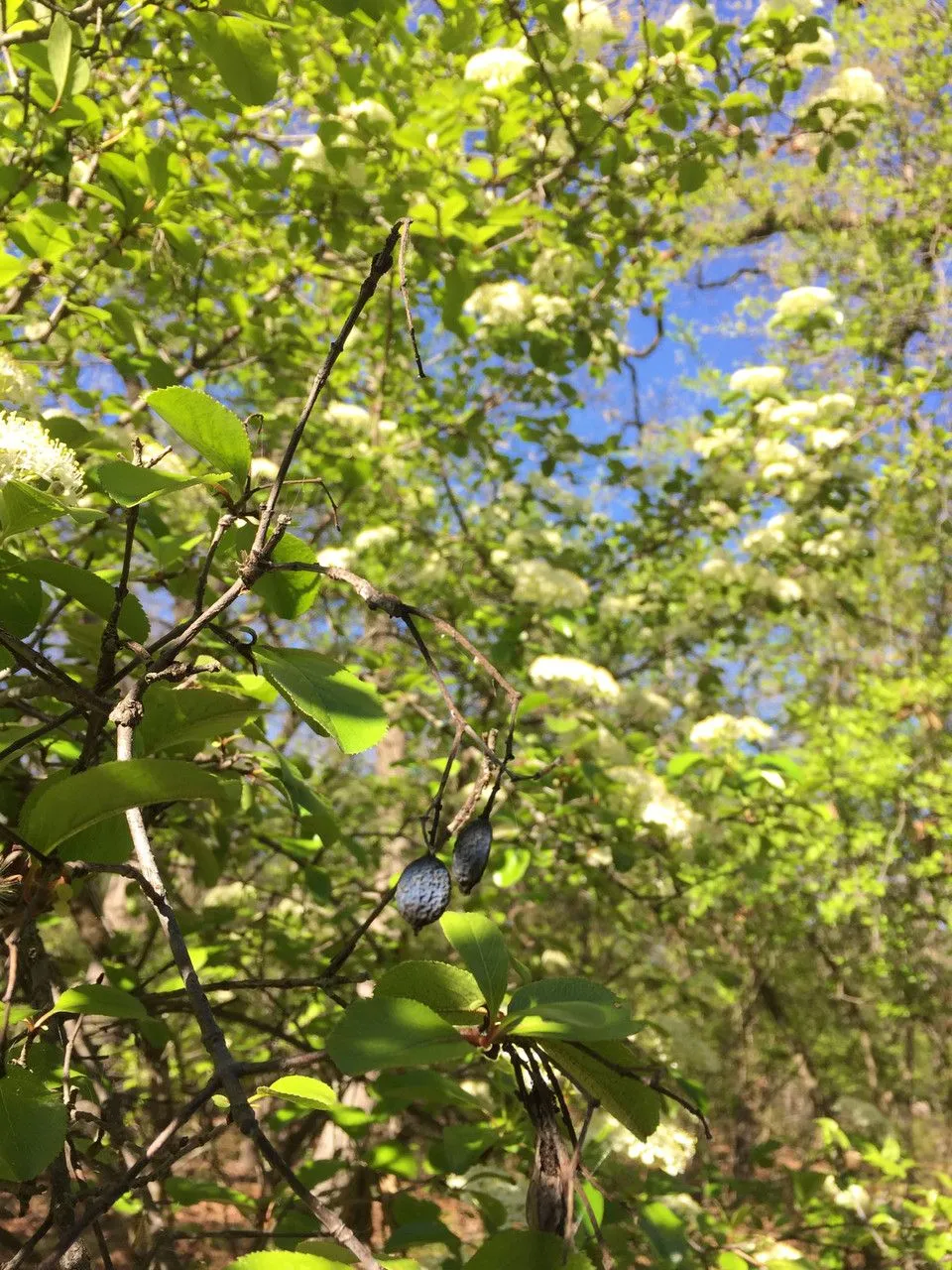
Author: Raf.
Bibliography: Alsogr. Amer.: 56 (1838)
Year: 1838
Status: accepted
Rank: species
Genus: Viburnum
Vegetable: False
Observations: C. & E. U.S.A. to Mexico (Coahuila)
Blue haw, scientifically known as Viburnum rufidulum, is a striking and versatile shrub that holds a cherished place in the landscapes of central and eastern United States extending to northern Mexico, particularly Coahuila. Classified within the family Viburnaceae, this plant is marked by its distinctive characteristics and wide adaptability to various environmental conditions.
Native to a diverse range of habitats, the Blue haw thrives in the temperate climates found across its range. It is aptly named for its berrylike fruits, which possess an appealing bluish hue, providing an attractive display and a valuable resource for wildlife. The berries ripen in late summer and early fall, offering a critical food source for birds and other fauna as the seasons transition.
The leaves of Viburnum rufidulum add to its ornamental appeal, showcasing a lustrous dark green in the spring and summer, transforming into vibrant shades of red, purple, or maroon in the autumn. This transformation marks one of the shrub’s most visually engaging periods, drawing interest in gardens and natural woodlands alike.
In addition to its aesthetic qualities, the Blue haw exhibits practical uses in landscaping. It presents a robust option for hedges, borders, and as a standalone specimen thanks to its sturdy growth habit and moderate height, typically reaching between 10 to 20 feet. The plant is also noted for its resilience, tolerating a range of soil types from well-drained sandy to clayey soils, and though partial to full sun, it can adapt to some shading.
Overall, the Blue haw, Viburnum rufidulum, not only highlights the beauty and diversity of native flora within its growing regions but also underscores the ecological value it imparts. This shrub’s ability to provide sustenance and shelter to wildlife, combined with its striking seasonal beauty, makes it an indispensable component of North American plant life.
Eng: blue haw, rusty black haw, rusty blackhaw, rusty nanny-berry, rusty viburnum, southern black haw
En: Blue haw, Rusty black haw, Rusty nanny-berry, Southern black haw, Rusty blackhaw, Rusty viburnum
Taken Nov 22, 2021 by Natures Guy (cc-by-sa)
Taken Nov 22, 2021 by Natures Guy (cc-by-sa)
Taken Apr 1, 2021 by Natures Guy (cc-by-sa)
Taken Aug 6, 2020 by catherine white (cc-by-sa)
Taken May 4, 2019 by Paul Scheper (cc-by-sa)
Taken Jun 30, 2017 by Tela Botanica − _ (cc-by-sa)
Taken Nov 1, 2015 by EOL − Bob O’Kennon (cc-by-nc)
Taken Oct 10, 2021 by Stu Wilson (cc-by-sa)
Taken Oct 16, 2022 by Julia Flowerpot (cc-by-sa)
Taken Nov 13, 2021 by susan white (cc-by-sa)
Taken Oct 11, 2020 by catherine white (cc-by-sa)
Taken Apr 15, 2021 by Brad Kelley (cc-by-sa)
Taken Feb 21, 2022 by James Browning (cc-by-sa)
Taken Oct 11, 2020 by catherine white (cc-by-sa)
Taken Apr 22, 2020 by Gayle Judkins (cc-by-sa)
Taken Apr 15, 2021 by Brad Kelley (cc-by-sa)
Taken Oct 11, 2020 by catherine white (cc-by-sa)
Taken Apr 22, 2020 by Gayle Judkins (cc-by-sa)
Taken Apr 1, 2021 by Natures Guy (cc-by-sa)
Taken Apr 15, 2021 by Brad Kelley (cc-by-sa)
Taken Apr 22, 2020 by Gayle Judkins (cc-by-sa)
Taken May 4, 2019 by Paul Scheper (cc-by-sa)
Taken Mar 22, 2016 by EOL − griff (cc-by-nc)
Taken Mar 20, 2016 by EOL − Don Young (cc-by-nc)
Taken Mar 20, 2016 by EOL − Don Young (cc-by-nc)
Taken Mar 20, 2016 by EOL − Don Young (cc-by-nc)
Taken Mar 20, 2016 by EOL − Bob O’Kennon (cc-by-nc)
Growth habit>: Tree, Shrub
Family: Myrtaceae Author: (F.Muell.) K.D.Hill & L.A.S.Johnson Bibliography: Telopea 6: 402 (1995) Year: 1995 Status:…
Family: Rubiaceae Author: Pierre ex A.Froehner Bibliography: Notizbl. Bot. Gart. Berlin-Dahlem 1: 237 (1897) Year:…
Family: Sapindaceae Author: Koidz. Bibliography: J. Coll. Sci. Imp. Univ. Tokyo 32(1): 38 (1911) Year:…
Family: Asteraceae Author: A.Gray Bibliography: Pacif. Railr. Rep.: 107 (1857) Year: 1857 Status: accepted Rank:…
Family: Fabaceae Author: Medik. Bibliography: Vorles. Churpfälz. Phys.-Ökon. Ges. 2: 398 (1787) Year: 1787 Status:…
Family: Aspleniaceae Author: (Cav.) Alston Bibliography: Bull. Misc. Inform. Kew 1932: 309 (1932) Year: 1932…